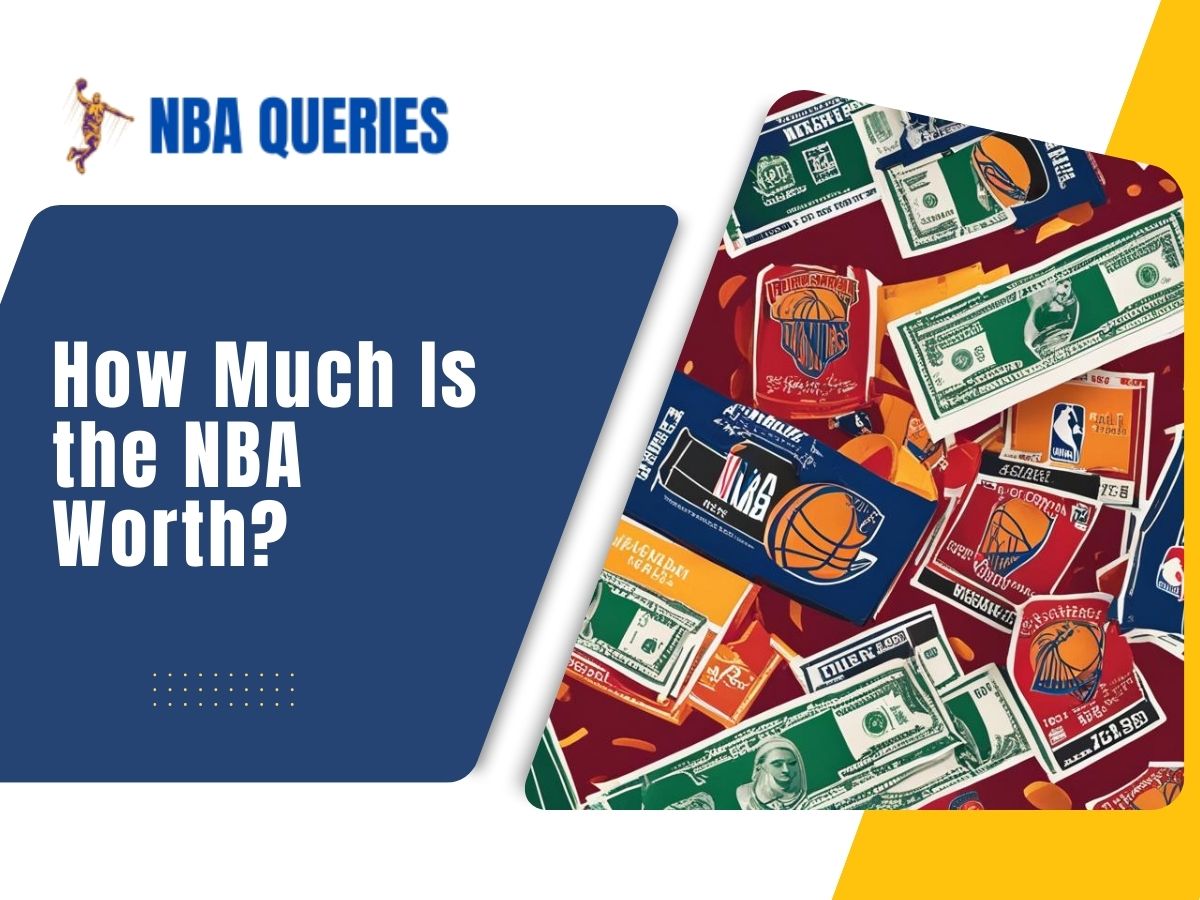The National Basketball Association (NBA) is not just a sports league; it’s a global phenomenon that transcends boundaries, cultures, and generations. From the iconic slam dunks to the nail-biting buzzer-beaters, the NBA has etched its place in the hearts of millions of fans worldwide. But beyond the thrilling on-court action, there’s a business side to the NBA that’s equally captivating. Let’s delve into the financial realm of the NBA and explore just how much it’s worth.
1. The Billion-Dollar Ballgame
The Average NBA Team Valuation
As of 2023, the average value of an NBA team stands at a staggering $3.85 billion—a remarkable 35% increase from the previous year. These valuations are not mere numbers; they represent the culmination of decades of hard work, strategic decisions, and a fan base that spans continents.
2. The Powerhouses: Golden State Warriors, New York Knicks, and Los Angeles Lakers
Golden State Warriors: The Reigning Champions of Valuation
For the second consecutive year, the Golden State Warriors reign supreme as the most valuable NBA team, with a jaw-dropping valuation of $7.7 billion. Their dominance extends beyond the court; they generated a whopping $765 million in revenue during the 2022-23 season, outpacing every other team by a significant margin. The Warriors’ brand, star players, and savvy management have propelled them to the top.
New York Knicks and Los Angeles Lakers: The Big Apple and Hollywood Stars
The New York Knicks ($6.6 billion) and the Los Angeles Lakers ($6.4 billion) complete the trifecta of teams worth more than $6 billion. The Knicks, despite their on-court struggles, remain a financial powerhouse due to their iconic Madison Square Garden home and loyal fan base. Meanwhile, the Lakers, with their storied history and Hollywood allure, continue to attract fans and sponsors alike.
3. The Driving Forces Behind Valuations
Media Rights: The Game-Changer
The surge in team valuations can be attributed to several factors, but none looms larger than the expectations surrounding media rights. The NBA’s current U.S. broadcasting deal with ESPN and Turner Sports averages a total of $2.66 billion per season through 2024-25. However, the real game-changer lies in the potential to double this value. By partnering with new distributors like Apple, YouTube TV, and Amazon Prime, and bundling international rights, the NBA aims to revolutionize its media landscape.
Sales of Controlling Stakes: A Billion-Dollar Dance
Over the past year, two significant sales of controlling stakes in NBA teams have fueled valuations. The Phoenix Suns were acquired for a staggering $4 billion, while the Charlotte Hornets changed hands for $3 billion. These transactions, along with the sale of 25% of the Milwaukee Bucks at a $3.2 billion valuation, have set the stage for exponential growth.
4. The Future: Expansion and Beyond
Two New Teams on the Horizon
The NBA’s next big move? Expansion. Las Vegas and Seattle are the likely destinations for two new teams. Experts predict that these expansion teams could fetch between $4 billion to $5 billion each. If realized, this windfall would mean that current team owners would pocket a staggering 16 times what Jerry Reinsdorf paid for the Chicago Bulls back in 1985.
5. Revenue Streams: Beyond Ticket Sales
Television and Streaming Rights
The NBA’s broadcasting deals extend far beyond U.S. borders. International viewership is a goldmine waiting to be tapped. The league’s global appeal has led to lucrative agreements with networks in Europe, Asia, and Latin America. China, with its massive basketball fan base, is a particularly vital market. The NBA’s partnership with Tencent, a Chinese tech giant, has been a game-changer. In 2020, the NBA’s digital partnership with Tencent alone was valued at $1.5 billion.
Merchandising and Licensing
From jerseys to sneakers, the NBA’s merchandise is a cash cow. The iconic Jumpman logo, synonymous with Michael Jordan, continues to rake in millions. The league’s licensing agreements with major brands like Nike, Adidas, and Under Armour contribute significantly to its revenue. The NBA Store in New York City, a pilgrimage site for fans, generates substantial foot traffic and sales.
Sponsorships and Endorsements
The NBA’s star players are not just athletes; they’re global icons. Brands vie for their endorsements, and the league capitalizes on this. Whether it’s LeBron James promoting Nike or Stephen Curry partnering with Under Armour, these deals add zeros to the NBA’s balance sheet. The league itself has major sponsors, including American Express, Coca-Cola, and State Farm.
6. The International Impact
Basketball Diplomacy
The NBA’s influence extends beyond the court. It’s a tool for diplomacy, fostering cultural exchange and goodwill. The league’s global games—preseason matchups held in countries like China, Mexico, and the United Kingdom—strengthen international ties. Players like Yao Ming (China) and Dirk Nowitzki (Germany) have become ambassadors for their nations.
The Rise of International Players
The NBA’s embrace of international talent has paid dividends. Players like Giannis Antetokounmpo (Greece), Luka Dončić (Slovenia), and Joel Embiid (Cameroon) have become household names. Their success not only boosts the league’s popularity but also opens up new markets. The NBA’s Basketball Without Borders program nurtures young talent globally, creating a pipeline of future stars.
7. The Business of All-Star Weekends and Playoffs
All-Star Weekends: A Spectacle of Entertainment
The NBA All-Star Weekend is more than just a showcase of skills; it’s a revenue generator. From the Slam Dunk Contest to the Celebrity Game, fans flock to witness the spectacle. Corporate sponsorships, ticket sales, and merchandise fly off the shelves. The host city enjoys an economic boost, and the NBA’s brand shines brighter.
Playoffs: The Ultimate Drama
The NBA Playoffs are a rollercoaster of emotions. Each game matters, and the stakes are high. Television ratings soar, advertisers pay a premium, and arenas are packed. The NBA’s revenue during the playoffs is a significant chunk of its annual earnings. The Finals, in particular, draw global attention and advertising dollars.

